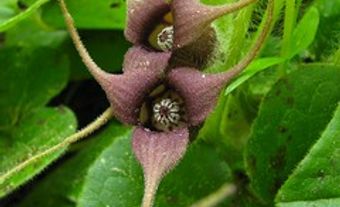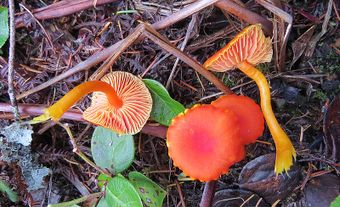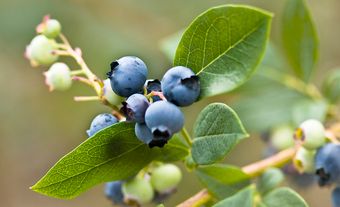Indigenous peoples in what is now Canada collectively used over a 1,000 different plants for food, medicine, materials, and in cultural rituals and mythology. Many of these species, ranging from algae to conifers and flowering plants, remain important to Indigenous communities today. This knowledge of plants and their uses has allowed Indigenous peoples to thrive in Canada’s diverse environments. Many traditional uses of plants have evolved to be used in modern life by Indigenous and non-Indigenous peoples alike. (See also Indigenous Peoples’ Medicine in Canada.)

Food Plants
Before the arrival of Europeans to what is now Canada, Indigenous peoples practised the cultivation of food crops in a variety of fertile areas. In terms of scale, this cultivation was at its most elaborate in Southern Ontario and the St. Lawrence Lowland. Crops included the “Three Sisters” — corn, beans and squash — as well as sunflowers, tobacco and possibly sunchokes (the tuber of a species of sunflower). The Three Sisters were often planted together, in what is known as companion planting, where each plant supported the growth and nutrition of the others.
Over 500 species of wild plants provided food for Indigenous peoples in Canada. Some of these foods are similar to those eaten today: root and green vegetables, fruits, nuts, berries, seeds and mushrooms. Traditional foods like maple syrup, wild rice and wild fruit are now enjoyed in Canada by Indigenous and non-Indigenous peoples alike.
Other wild foods — some types of lichens, marine algae, and the inner bark tissues of some trees — are not normally part of the modern diet. Indigenous peoples also used plants as sweeteners, flavourings and beverages; many wild plants provided more than one type of food.
Did you know?
Indigenous trade routes played a role in the distribution of some plants, for example, the pawpaw. Primarily found in the Eastern United States, this small tree now reaches Southern Ontario. Indigenous peoples ate its sweet, custard-like fruit and used both the fruit and other parts of the plant to treat various ailments, including head lice and skin ulcers.
Medicinal Plants
Plants were, and still are, an important component of Indigenous medicine. Herbal specialists were usually responsible for curing disease and maintaining health. Although administering herbal medicines was sometimes associated with ritual and in many cultures herbal curing and magical curing were virtually inseparable, these specialists were not necessarily shamans who invoked supernatural powers in healing. Sometimes, special curative and spiritual organizations existed, like the Ojibwa Midewiwin (Grand Medicine Society) in which initiates passed through stages, eventually learning the ritual and herbalism for curing disease.
More than 500 plants were used in Indigenous medicine. Specialists could administer such medicines as herbal teas, preparations to be chewed and swallowed, poultices, inhaled vapours, or a variety of other applications. Specialists could prescribe any part of a plant, either alone or in combination with other herbs.
Indigenous practitioners were skilled in the selection, preparation and dosage of herbal medicines, and traditional treatments were effective in treating a host of ailments, including wounds, skin sores, gastrointestinal disorders, coughs, colds, fevers and rheumatism. A famous example is the curing of Jacques Cartier’s men of scurvy in the winter of 1535–36. The St. Lawrence Iroquoians of Stadacona treated them with a conifer tea high in vitamin C content (probably Eastern white pine).
Utility Plants
Wood was an important fuel, and as a major component of utilitarian items: buildings, dugout canoes, boxes, totem poles and implements like paddles, digging sticks, spear shafts, bows, arrows, and snowshoe frames. Indigenous peoples turned sheets of bark, especially birch, into containers and canoes. They also used bark to cover roofs and line storage pits.
Fibrous tissues from stems, roots, bark and leaves served for twine, rope and weaving materials for baskets, mats and clothing. Indigenous peoples used tree resin as glue and for waterproofing. Plants provided dyes and pigments, scents, absorbent materials, abrasives, linings and wrappings, insect repellents, toys, recreational items, and personal adornment.

Spiritual Importance
By representing a spiritual connection with the earth, many plants provide more than just corporeal or utilitarian benefits. For example, the Haudenosaunee hold several ceremonies — like the Sap, Seed, Strawberry, Bean, and Green Corn ceremonies — that honour the interconnectivity of plant and human life.
Tobacco is of major importance to many peoples, figuring prominently in ceremonies, everyday life, and creation stories. Indigenous peoples use tobacco, sage, sweetgrass and cedar for various spiritual purposes in smudging ceremonies, where smoke is fanned over the face and head.

 Share on Facebook
Share on Facebook Share on X
Share on X Share by Email
Share by Email Share on Google Classroom
Share on Google Classroom



